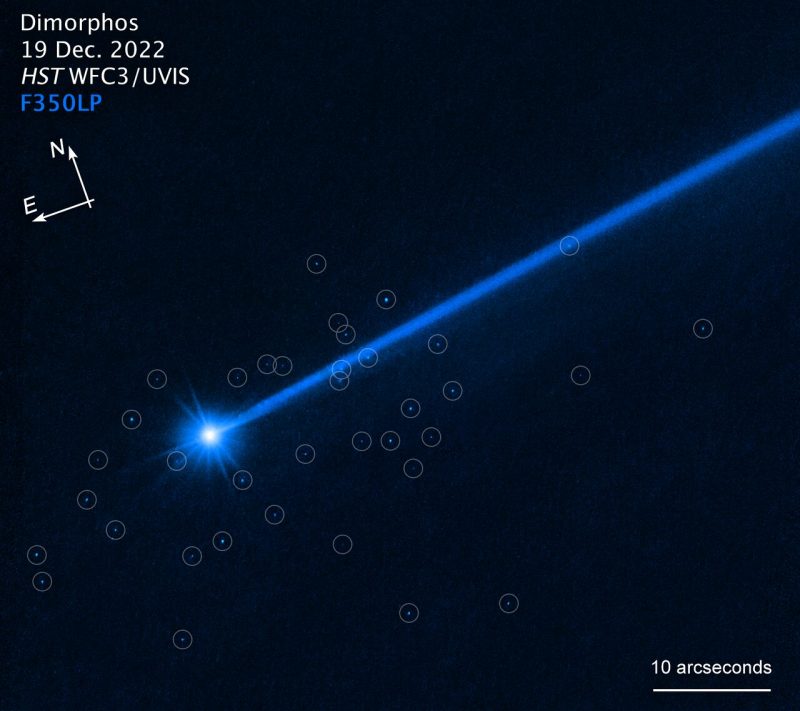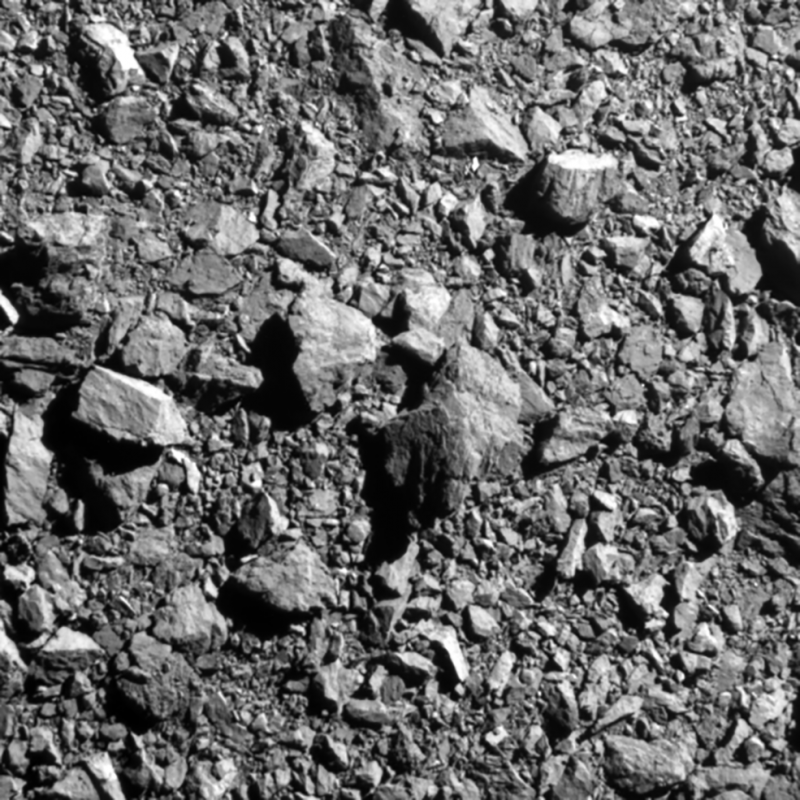When the DART spacecraft deliberately struck an asteroid, to try to nudge it from its path, it also released a swarm of boulders.
DART asteroid impact had unwelcome consequences
The DART spacecraft’s deliberate impact with tiny asteroid moon Dimorphos – in September 2022 – was an exercise in planetary defense. Space scientists wanted to know if we could defend Earth against an asteroid on a collision course by knocking it off course. It was only a test. But the strategy worked. The spacecraft impact did nudge the asteroid, a little. But, according to UCLA astronomer Dave Jewitt and his team, the impact released a boulder storm.
A Hubble Space Telescope image of Dimorphos – captured in December 2022 – clearly shows a debris field of boulders blown from the asteroid’s surface. And, as Jewitt said in a statement in early August 2023:
The boulder swarm is like a cloud of shrapnel expanding from a hand grenade. Because those big boulders basically share the speed of the targeted asteroid, they’re capable of doing their own damage.
The peer-reviewed Astrophysical Journal Letters published Jewitt and team’s results in July, 2023.

Are these boulders a danger to Earth?
No. The DART mission took place over 6 million miles (about 10 million km) away. That’s more than 20 times the moon’s distance. So the boulders blown off the asteroid by the spacecraft aren’t near us in space. They’re no threat to us.
Still, Jewitt’s results are food for thought. After all, as Jewitt further explained:
… given the high speed of a typical impact, a 15-foot boulder hitting Earth would deliver as much energy as the atomic bomb that was dropped on Hiroshima.
Protecting Earth was the goal of the DART mission. But Jewitt’s study found that 37 boulders flew from Dimorphos’ surface, into space, following the DART impact. The boulders range in size from 3 to 22 feet (1 to 6.7 meters). They are, essentially, new asteroids, and as such they’re potentially capable of striking Earth.
But, again, these particular boulders flung into space are no threat to Earth. If they were, Jewitt said:
They’d hit at the same speed the asteroid was traveling — fast enough to cause tremendous damage.
What DART did
The asteroid Dimorphos is tiny. It’s only about 581 feet (177 meters) in diameter. It became the designated target for the DART mission partly for that reason, and also due to its relative nearness to Earth.
DART stands for Double Asteroid Redirection Test. The DART spacecraft weighs in at a half-ton. So, scientists believed that smashing the spacecraft into the asteroid might change Dimorphos’ trajectory.
On September 26, 2022, DART crashed into Dimorphos at 13,000 mph (21,000 km/h). NASA confirmed that it reduced the orbit of Dimorphos around its companion asteroid Didymos by a few millimeters per second.

Boulders were on Dimorphos’ surface
Jewitt’s study determined the boulders probably flew off Dimorphos’ surface during the impact by DART.
Close-up images from DART shortly before impact indicated the surface had similarly sized rocks on its surface.
And, by the way – in the image at the top of this post – those small boulders captured by the Hubble Telescope are some of the faintest objects ever imaged in our solar system. Jewitt said:
If we follow the boulders in future Hubble observations, we might have enough data to pin down the boulders’ precise trajectories.
And then we’ll see in which directions they were launched from the surface and figure out exactly how they were ejected.
HERA will study Dimorphos, too
The European Space Agency’s HERA spacecraft will pass Dimorphos in December 2026. It’ll collect more data on the aftermath of the impact, including the boulders ejected from the asteroid. After all, the boulders will still be there then, traveling with Dimorphos in orbit around the sun.
And so HERA’s data are expected to help shape future strategies for planetary defense.

Bottom line: According to a recent study from UCLA, deliberately altering the course of an asteroid heading released a boulder storm.
Watch DART asteroid impact in Hubble movie











